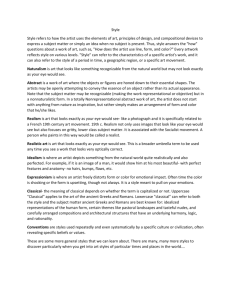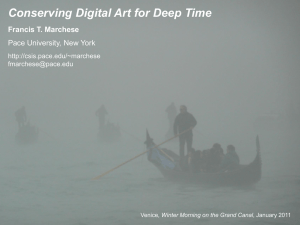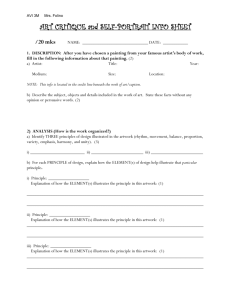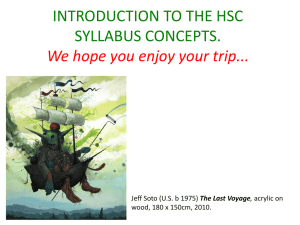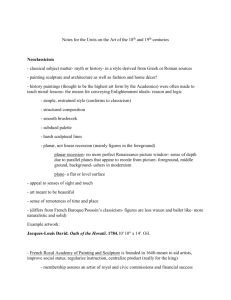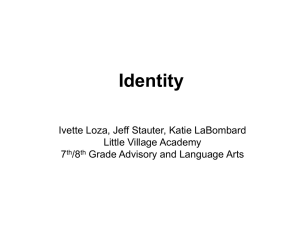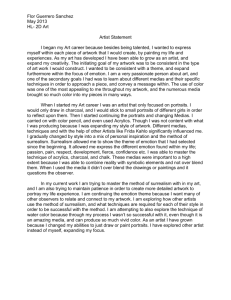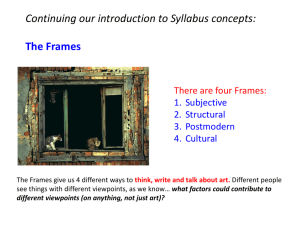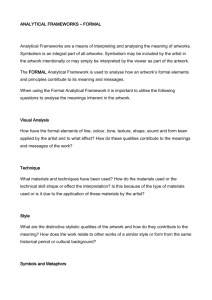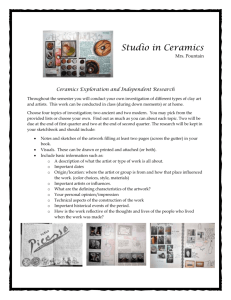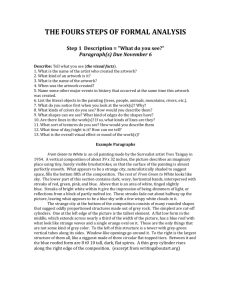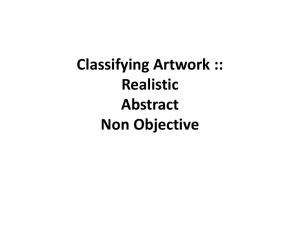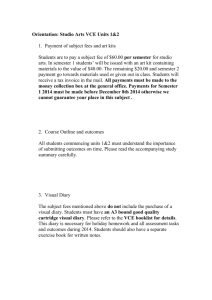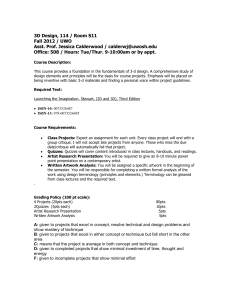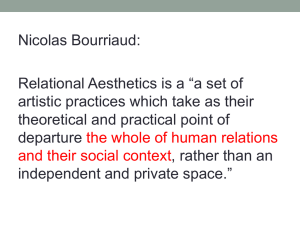Session 1-2015 - WordPress.com
advertisement
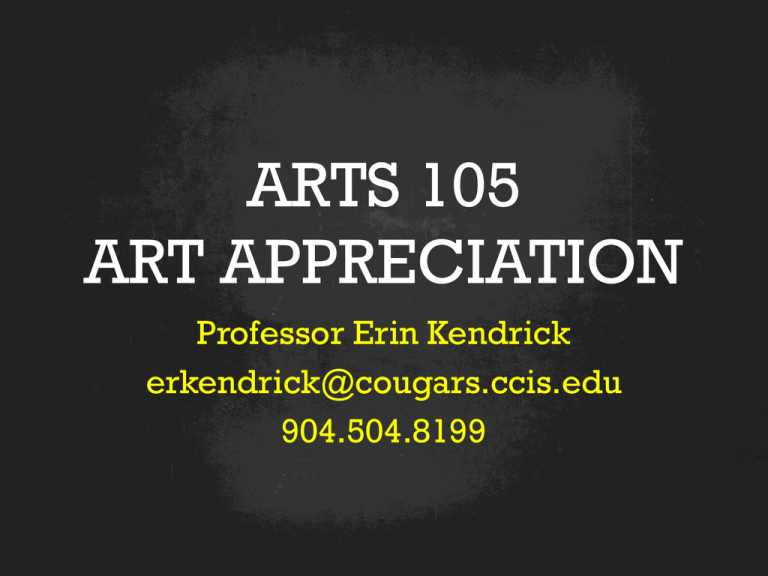
ARTS 105 ART APPRECIATION Professor Erin Kendrick erkendrick@cougars.ccis.edu 904.504.8199 Minute Paper – Is this Art? Cai Guo Qiang, Footprints of History, 2008 What is Art Appreciation? “Appreciating Art is never just a question of accepting visual stimuli, but also involves intelligently contemplating why and how works of art come to be made and have meaning. By helping you understanding the artist’s creative process, we hope to engage your own critical ability, the process by which you create your own ideas, as well” – Page 3 Julie Burstein: 4 Lessons in Creativity http://on.ted.com/j085y 4 Lessons in Creativity • • • • Embrace EXPERIENCE Embrace CHALLENGES Embrace LIMITATIONS Embrace LOSS The Creative Process • http://www.youtube.com/watch?v=cQIj7E6CR8&list=PLwLQhM7PdqJ1JSu5YZlH55xBhZ72fMxZ&feature=share • https://artsy.net/artwork/cai-guo-qiangdesire-for-zero-gravity The Creative Process source - http://sites.moca.org/thecurve/2012/03/09/chaos-gravity-and-fire/ Roles of an Artist 1. They help us see the world in new an innovative ways. Yayoi Kusama “You Who Are Getting Obliterated in the Dancing Swarm of Fireflies” Fireflies on the Water (2002) Roles of an Artist 2. They create a visual record of time and place. Andy Warhol, Birmingham Race Riot, 1964 Lucille Clerc, French Cartoonist, 2015 Roles of an Artist 3. They make functional objects more pleasurable by imbuing them with beauty and meaning. Kane Kwei, Chicken Coffin, 1987 Gee's Bend Quilters Lucy Marie Mingo, Nancy Pettway, and Arlonzia Pettway Roles of an Artist The Ghent Altarpiece: God Almighty (detail) 1426 - 1427 4. Artists give form to the immaterial – hidden or universal truths, spiritual forms, and/or personal feelings. Screen Shot from “Black Jesus” episode of Good Times, 1974 (Ernie Barnes) PROMETHEUS HAS LANDED • https://www.youtube.com/watch?v=JoQ gcz8LtB0 There are no “lines” in space “God does not build in straight lines” -Charlie Holloway Developing Visual Literacy From the text… “…one of the primary purposes of any art appreciation text is to provide you with a descriptive vocabulary, a set of terms, phrases, concepts and approaches that will allow you to think critically about visual images” Visual Literacy – the ability to recognize why you like a work of art and how it communicates to you. Active Seeing – the process by which we look more closely at the visual world. Rene Magritte, The Treachery of Images (This is not a pipe), 1929 Subject Matter vs. Content • Subject Matter – What the image or object literally represents • Content – What the artwork means Vocabulary • Representational Art – portrays natural objects in recognizable form When the representation is so realistic it appears to be a photograph is said to be photorealistic. When the representation is realistic (and or recognizable) but is presented from a subjective/personal point of view it is defined as naturalism. Leonardo Da Vinci, Mona Lisa The more a representation resembles what the eye sees, the more it is said to be an example of realism. Abstract Art– rendering an object in a manner that is recognizable although not completely representational Pablo Picasso, Weeping Woman, 1937 Vocabulary Vocabulary • Non-Representational (Non-Objective) Art -when a work does not refer to the natural or objective world at all (generally consists of line, shape, and color) Wasilly Kandinsky, “ Yellow, Red, Blue” 1925 Subject Matter vs. Content • Form – the overall structure of an artwork. It includes aspects such as its materials, size/scale, and the organization of its parts into a composition. • Iconography – a system of images whose meaning is understood by a certain cultural group • The images used in iconography represent concepts or beliefs beyond literal subject matter • We often refer to the visual images as symbols • Symbols – images that represent something more than their literal meaning Ghada Amer, “Snow White Without the Dwarves”, 2008” Acrylic, embroidery and gel medium on canvas 50 x 60 inches Seeing the Value in Art • How does the public tend to receive innovative art? With reservation because it usually has little context by which to understand and appreciate it. It is difficult to value that which is not understood • What is the purpose of the Arts in Public Places Program? The National Endowment for the Arts (NEA) created this program to require 1% of the cost of new public buildings be dedicated to art for their public spaces • What constitures the activist direction in public art? Because public artwork directly impacts our daily lives many artists use the public context for activist goals, addressing social & political issues. Angela Strassheim: Untitled (Janine Eight Months Pregnant), 2013. 50 x 60 inches. Jean-Michel Basquiat, Charles the First, 1982, Acrylic and Oil Stick on Canvas (3 panels) http://closerlook.pearsoncm g.com/view.php?type=close rlook&id=642# Seeing the Value in Art • Marina Abramović - performance artist • https://www.youtube.com/watch?v=yKw 7LuEqUVs • Then this happened… • https://www.youtube.com/watch?v=xMG 2oNqBy-Y&feature=kp



